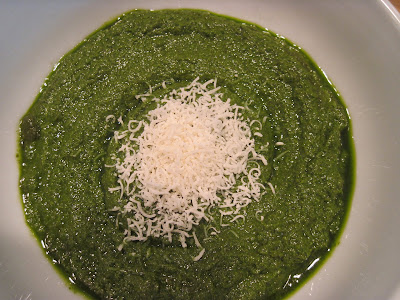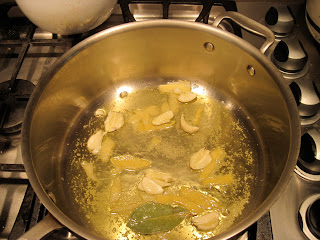
The man in the leather picture frame that's perched on my kitchen countertop is one Joseph Patrick Giamundo (1913-1978).
Uncle Joe.
I shot the picture myself more than thirty years ago. It was taken on the roof of our old apartment house in East New York, when he and my cousin John were fixing the handrail that went around an air shaft. John had found himself temporarily out of work, so Uncle Joe took him on until he could land another gig.
My cousin would tell you himself that our uncle, a small-shop contractor who didn't make a ton of dough, might have gotten by just fine without his help. But John and his wife Susie had a young daughter to take care of, and so that was the end of that; there was no way Uncle Joe wasn't going to lend a hand. Just no possible way.
There are dozens of people in our family, and every one of us was on the receiving end of Uncle Joe's enormous generosity and love. My own mother, an early widow with three young boys to raise, might have been forced onto the welfare rolls ("relief," the old-timers called it) if not for her brother's devotion and care. Not a single one of us doesn't still worship the man, or long to see him at the barbecue pit cooking sausages and chicken, one or more of his nieces and nephews hanging off his pant legs demanding his attention. Eyes well up when his name is spoken.
You don't become family patriarch for nothing. It's a hard-earned position.
Anyway, Uncle Joe's pic doesn't usually hang out in the kitchen; it stays in the living room, next to the chair I always sit in when I'm in there.
I like having him close by. Which is how he wound up next to the butter dish and the Pellegrino and the bowl of Medjool dates one night this past winter.
If you're reading (or, as many of you, writing) blogs like this one, I don't need to explain the whole food-is-love thing. So I won't.
All I'll say is that, with only a couple of exceptions, every person I really love in this life has logged at least a bit of time in the kitchen with me, some of them a lot of time. Hours, sometimes days can pass where it's the only room in the house that gets any action at all.
Seriously. Days. I mean it. Every August the house fills up with about a dozen different clan members, and for five days straight all we do is cook and eat. I love it.
This particular winter's night, a couple of exceptionally close friends about, Trippa alla Romana (Roman-style tripe in tomato sauce) was on the menu. Lots of wine, plenty of laughter (of course the occasional yucky tripe joke), everybody having a good time. When out of nowhere, and without even a hint of thought or planning -- I'm swearing to this -- I disappeared into the living room, mid-sentence, as if by unstoppable force, I was later told. When I got back to the kitchen minutes later, Uncle Joe was with me, all decked out in the fancy brown leather frame I'd gotten for him some years back.
I'd never done anything like this before, nor since, and didn't know why I did it then. And yet, astonishingly, everybody in the kitchen had clearly been moved; I know these people, I know their faces. They were moved.
Except that not a one of them had ever laid eyes on my long-ago-taken-from-us uncle.
I'll leave the spooky weird interpretations to others, that's not my thing. I just know that we were all having a good time before Uncle Joe showed up, but that the rest of the evening was better still. I was whole. The others were (mysteriously) uplifted.
It was way, way cool. And, like so many of my warmest memories, it happened in my kitchen.
Oh, and the trippa? Weeks later I learned from his sister Anna that it was Uncle Joe's absolute favorite meal (cue the spooky pipe organ). Pretty tasty too.
 I'm a big squid guy. If it's on the menu, I'm ordering it, at least once just to see how the place handles it. Sometimes I even score some when it isn't on the menu. Just the other day, whilst lunching at Saigon on Forest Ave., I managed to coax a couple of nicely grilled squid out of the kitchen. It was good. I was happy.
I'm a big squid guy. If it's on the menu, I'm ordering it, at least once just to see how the place handles it. Sometimes I even score some when it isn't on the menu. Just the other day, whilst lunching at Saigon on Forest Ave., I managed to coax a couple of nicely grilled squid out of the kitchen. It was good. I was happy.



















































